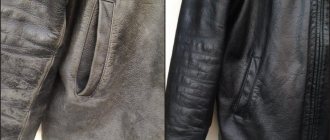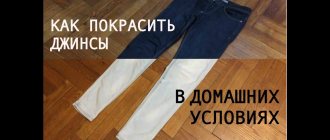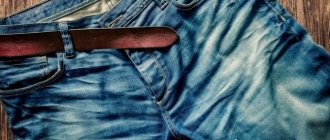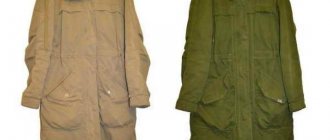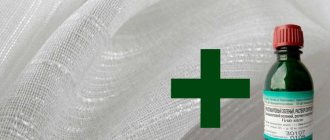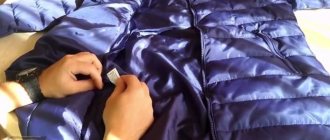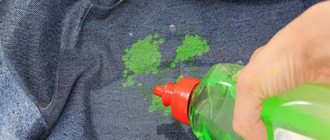Sometimes, when doing handicrafts or creating a unique interior for your home, you need fabric of a certain color or shade. Shopping trips in search of the right material will not necessarily bring the desired result, but it will definitely take a lot of effort and time.
In this article we will talk about an excellent alternative - DIY coloring using natural ingredients. This is such a fascinating process that for many it becomes a full-fledged hobby. Once you try it, you can't stop.
Dyeing in the washing machine
When using this method, the probability of uniform coloring and obtaining a rich color is quite high. To use it, you need to purchase a special dye, that is, intended for use in a washing machine. It is poured directly into the drum or is found in a package during washing, which you just need to open.
At the end of the cycle, the product is washed in water with the addition of vinegar to firmly fix the color. And in order to remove excess paint, it is recommended to wash the item again, but with regular powder. Anyone who is worried about whether the paint will damage their car can be sure that this will not happen.
Why is it more profitable to use natural dyes for fabric?
Artificial colors and flavors surround us at every step and cause considerable harm to human health and the environment, so lately naturalness in everything has become increasingly valued.
If you study the forgotten recipes of our grandmothers, it turns out that using the most common vegetable dyes, you can easily dye fabric in all the colors of the rainbow. The colors of natural dyes, unlike synthetic ones, do not have very bright, saturated tones; they are softer, deeper and more noble. The basic palette of nature is yellow, green and red, although if you need blue or purple, you can easily get it. One of the undeniable advantages of natural ingredients, in addition to naturalness, is color fastness. Textiles dyed with natural dyes practically do not fade.
Other dyeing methods
Many are also interested in how to dye fabric black without using special dyes. There are several unconventional methods that involve the use:
- Hair Dye. Such a composition can give the most unexpected effect, so it is better to experiment with a thing that you don’t mind spoiling. The preparation of the desired shade is diluted in such an amount of water that the product is completely immersed in it. Soaking lasts at least an hour, after which rinsing is done by adding vinegar and salt to the water.
- Coffee. In this case, we are talking, rather, not about repainting the fabric, but about how to make the black color of something more intense. The coffee must be strong and strained. The fabric is thoroughly rubbed with this composition.
- Tobacco water. It is used for the same purposes as coffee. The proportions for preparing the solution are as follows: add 15 g of tobacco per liter of water. The composition is boiled, and then the fabric is treated with it.
to contents
How to choose clothes paint
There are a total of six types/types of fabric dyes. But not all of them are suitable for home use. We will only talk about those that can be used at home.
You can get black color without a tint using acrylic fabric paint
To update the color
The most common and cheapest dyes for things and fabrics are aniline. But it is worth knowing that they give a “transparent” color. This means that you won’t be able to radically change the color of an item or fabric with their help. Even if you paint a thing black, the previous one will “look through” it.
You can refresh faded color using aniline dyes
If you want to dye your clothes because there is a stain on it, aniline pigment will not cover it either. The stain may become less noticeable, but it will still be there. Aniline dyes are good for updating color, but not for changing it.
When dyeing textiles with aniline dye, after all areas are dyed, add salt diluted in hot water. Bring the dye solution with salt and the placed item to a temperature of 80-90°C. This will fix the pigment. In this case, the solution becomes transparent, and the color of the textile becomes brighter.
When painting things blue or green, use thick rubber gloves.
Hands paint even better than fabrics. You can already rinse without gloves . Blue, brilliant green, and fucorcin can also be classified as aniline dyes. These are substances of the same group as aniline pigments. They just have “side” effects—disinfecting properties, thanks to which they have found their use in medicine. They can also be used to refresh the color of products of a similar color scheme. For example, bluing is suitable for bluing jeans and blue T-shirts. To refresh the green color - brilliant green. Well, pink or red-brown things will be updated by fukortsin. All these pharmaceutical preparations dissolve in water and are well absorbed into natural fabrics. But you will have to wash the “refreshed” items separately, otherwise everything else will be tinted.
For plain coloring and painting
To obtain a “thick” color, use acrylic fabric paints. They are sold in the form of powder, spray, paste. They are also good for painting fabrics, so you can find them in craft stores. They can have a variety of “effects” - glitter, pearl, glow in the dark.
Acrylic textile paints are the best choice for dyeing natural or mixed fabrics. Using DECOLA paint, you can even paint on fabric
Acrylic paints can be labeled Textil or Batik. To dye fabric, textile ones are more suitable. They even work with heavy materials such as velor or cotton/viscose knitwear. Acrylic batik paint is good for thin, lightweight fabrics.
This type of paint can be used both for uniform monochromatic coloring and for creating designs. There are even markers for painting clothes for these purposes. They can be washable or permanent. Washable ones disappear after 2-3 washes.
How to dye knitwear and wool
Knitwear and wool are dyed with special compounds that do not require high temperatures. They can be in the form of powders or pastes. For example, there are cube pigments for dyeing woolen products and embossed knitwear. They do not dissolve in water - to dye, you need to add soda to the water, then the pigment, and stir well. After dyeing, the item must be soaked/rinsed in water and vinegar. An acidic environment transforms them back into an insoluble state, that is, the pigment is “fixed” on the fabric.
This paint can be used to dye a wool sweater.
There are acid dyes for wool in the form of powders or pastes. They dissolve well in water, but they themselves contain acids, which create the required environment for pigment dissolution.
You need to be careful with yellow and orange shades of vat paints - they increase the impact of ultraviolet radiation, which accelerates the destruction of fibers.
How to paint synthetics
As mentioned above, polyester and nylon are difficult to dye at home. There are dry cleaners that can do this, but even they do not provide guarantees.
Make sure there are no creases or “stable” folds. Seams or places where there are several layers of fabric, “crease” more actively with a spatula or stick
At the moment, there are only a few dyes for home dyeing of synthetics (acrylic, polyester, polyamide, nylon). Jacquard Idye Poly and Rit Dye More Synthetic work best. These are American paints.
Jacquard Idye Poly is sold in sachets that you throw into the water. Can be dyed by hand or in a washing machine. The paint also works at low temperatures - about 40°C. So it is also suitable for dyeing delicate fabrics (underwear, swimwear including).
Not many dyes are suitable for hand-dying synthetic fabrics
Rit DyeMore - color in a bottle. Designed specifically for dyeing synthetic fabrics. Suitable for mixed fabrics in which more than 35% are synthetic fibers. One important point: fabrics must be dyed at a temperature close to boiling point. Not all things can withstand this.
Rit DyeMore Liquid Dye - dyes synthetic and blended fabrics, including anything containing 35% or more polyester, acrylic, acetate or nylon. Ideal for rejuvenating faded clothing, hiding defects that appear during the washing process and much more.
Updating the shade of a leather jacket
Genuine leather is the material from which jackets, raincoats and other wardrobe items are made. Products made from it look respectable. Things can be worn for up to 10-20 years. During this time, abrasions form in the area of the collar, belt and cuffs, which significantly worsens the appearance.
You can get rid of them by repainting your leather jacket. In a different color, the thing takes on a second life. If only a certain part of the product has lost its appearance, the entire jacket will still have to be repainted.
Otherwise, the treated areas will look like patches. It is not recommended to radically change the color or repaint the jacket from a dark to a light tone. It is also recommended to choose aerosol paints, since they are easier to work with than paste.
Attention! Salamander and Tarrago paints in spray or paste form are suitable for leather products.
The staining procedure is as follows:
- the surface of the product is wiped with a damp foam sponge;
- the jacket is hung on the trempel so that the bottom does not touch the floor;
- shake the can of paint and spray it evenly over the entire surface;
- After the first layer has completely dried, the product is painted again.
It is better to carry out work outside. In natural light, the uniform distribution of paint is clearly visible; walls, floors and furniture will not get dirty. Using paste paint, you will have to process the jacket manually using a piece of foam rubber. In this case, you can apply too thick a layer and the item will lose its appearance.
Preliminary procedures
Before you start dyeing your coat, you need to assess the risks and make a firm decision whether it is worth doing. If there is no way out, then you need to act according to certain instructions. First of all, you need to determine the composition of the fabric, because it determines the quality of the work carried out in the future:
- Natural fibers - they can be dyed any color.
- Synthetic fabrics - this procedure is not suitable for them, since it is impossible to achieve the desired result.
- Combined - the shade of the dyed coat will be slightly lighter than expected.
Important! Unscrupulous manufacturers may lie and indicate information on the tag that is not true. In order not to spoil the item, you need to do the procedure in a small and inconspicuous area.
As for the choice of color, experts do not recommend bold experiments, leaving the coat in approximately the same color as it was originally. It is best to choose a color several shades darker, so that the experiment will end successfully and the item will delight you with its attractive appearance.
Features of choosing a dye
When deciding to renew faded clothing, you first need to study the composition of the material from which it is made. You can easily dye a jacket made of cotton, denim, or linen. But with synthetic fabrics you will have to tinker. Some synthetics cannot be painted at all - the paint simply flows off the surface of the product like water.
Polyester is often used as a synthetic material for outerwear. Jackets made from this fabric do not get wet, get dirty little, and last a long time. If the fabric is 100% polyester, it will be very difficult to dye. It is better when the material contains additional fibers such as cotton, linen, viscose, and the percentage of their content is at least 40.
Often, manufacturers of synthetic materials used for sewing outerwear treat the surface of the fabric with a special water-repellent composition. A thin protective film prevents paint from penetrating into the fibers of the material, which significantly complicates the dyeing process. The label always mentions the presence of such impregnation, so before starting painting it is very important to study all the information about your product.
The final coloring result is significantly influenced by the original color of the product. On the packaging of their product, the manufacturer always indicates the color that should be obtained after processing. We must remember that this only applies to dyeing white things. Otherwise, the result may be unpredictable. To paint colored items, it is better to choose a paint that is a shade darker.
How to prepare for coloring
Only natural fabrics are ideally dyed: cotton, wool, linen, silk. As for synthetic material, you should be careful and use special dyes intended for such fabric. Colors must be selected that are almost identical to the original shade of the material, then the risk of spoiling the item will be much less.
First, carefully study the instructions for the dye. There should be information about what kind of fabric it is used for, and also a point-by-point description of how to use it for home dyeing. Before the procedure, things must be washed, removing grease stains and other contaminants. This is especially true for old stains, which will remain after painting. That is why it is imperative to remove all contaminants before painting begins.
Step 1: Place a pot of water on the fire
Step 2: Add Retainer
Step 3: Add coloring agent to boiling water
Step 4: Dip the Fabric in Dye
Step 5: Simmer clothes for 30 minutes
Step 6: Rinse the dyed fabric
Step 7: Dry the item in the fresh air
Is it possible to dye fabric green?
Important! Paint
You can
coat your clothes
with green paint
evenly at home, without streaks or stains, only if you periodically turn the product over in the container. The same rule applies when you decide to change the shade of tulle, curtains, nylon mesh or any other textile.
Interesting materials:
How much RAM should a tablet have? How much RAM does Android 8 need? How much RAM does a browser need? How much RAM does a 64 bit system support? How much RAM does the iPad 2022 have? How much RAM does Honor 10 Lite have? How much RAM does iPad Air 2022 have? How much RAM does iPad Pro 2022 have? How much RAM does iPad Pro 2022 have? How much RAM does iPad have?
How to paint material in bright colors
As a rule, the most vibrant colors can be achieved by using berries as dyes.
Blackberries will give red, blueberries will give purple, cherries and cranberries will give pink. A beautiful blue color can be obtained from regular red cabbage. The painting process is a real creativity; in addition to the quantity and composition of coloring substances, the final result is influenced by: the volume and temperature of the coloring composition, the hardness of the water used, and the exposure time. The main thing is not to be afraid to experiment, and everything will certainly work out.
Why do you need a pocket in women's underpants?
What are cowardly dodges
Stages of dyeing cotton items with natural dye
Product preparation
Start by washing your clothes in warm water using a mild detergent. If the item is new, remove the starch layer by boiling for 20-25 minutes in a soap-soda solution. Then rinse the product vigorously so that the remaining soap and soda do not interfere with binding to the dye.
When preparing clothes, also consider the following requirements and recommendations:
- Make sure there are no stains;
- Use bleach to achieve a uniform white shade;
- After washing, do not dry things - they need to be painted while wet.
Selection of natural dye material
The future color of the product depends on the type of raw material:
- Brown . Achieved thanks to oak bark, walnut shells, cinnamon, dandelion roots, henna.
- Orange . The sources of colors are: onion peels, celandine, wild apple bark, carrots, plantain seeds.
- Green . You can use spinach leaves, lilac flowers, grass, elderberry leaves, juniper berries, sorrel roots.
- Blue and cyan . Red cabbage, dogwood bark, quinoa seeds, blueberries, cornflower petals.
- Yellow . For this shade, dandelion flowers, calendula and narcissus heads, turmeric, birch bark, St. John's wort, carrots, poplar buds, and orange zest are suitable.
- Red . Wolfberry leaves, elderberry, blueberries, beets.
- Black . Use coffee beans.
- Gray-black shades . Can be obtained using ink nuts, California nut shells, walnut shells, and blackberries.
Fruits, berries and nuts must be ripe. Leaves and stems should be harvested after the plant reaches maximum growth. Pick only fully bloomed flowers.
Soaking clothes in fixative
It is necessary to give clothes a rich shade. The type of fixative is determined by the type of dye:
- If using berries, prepare a salt fixative by diluting half a cup of salt with 2 quarts of cold water.
- If the dye is other parts of the plants, create a vinegar fixative. To do this, mix vinegar and cold water in a ratio of 1:4.
Soak the textile item in the fixative for 1 hour. Then rinse the item well in cold water.
Dye cutting
- Cut the raw material into small pieces and place in a large pot. Choose a container that is about half full after immersing your clothes.
- Pour water into a container in a ratio of 1:2 and bring the mixture to a boil. Next, turn the heat to low and leave for 60 minutes.
- Once cooked, pass the dye through a sieve to remove any plant particles. Pour the clean liquid in the form of paint back into the pan.
Processing things in dye
Place the clothing in a pan with dye and keep it on the gas stove until the item receives the desired color. Please note the following points:
- Average processing time is 30 to 60 minutes;
- After drying, the color will become less bright than when wet;
- To obtain rich shades, leave the textiles in the tank overnight;
- During processing, periodically stir the contents of the container to obtain a uniform shade.
Washing clothes
The first time the dyed item is washed in cold water and separately from other items. It is best to dry things on a hanger to avoid streaks.
Tips and tricks
The procedure for repainting a jacket must be approached responsibly. It is strictly unacceptable to do this in a hurry, especially if you use a brush or foam rubber. It is very important to achieve uniform distribution of the dye over the entire surface of the product.
Before starting work, the item must be washed, dried, removed from dust and greasy stains, and smoothed out all wrinkles. Be sure to wear gloves and a respirator so that the chemical components of the paint do not irritate the mucous membranes. After dyeing, the first wash is carried out by hand and dried in the open air, avoiding direct sunlight.
You can change the color of the jacket using chemical dyes. They are selected taking into account the material of outerwear. If you strictly follow all the recommendations in the instructions, the color update will be successful.
How do you like the article?
What types of fabrics can be dyed?
There will be no difficulties in dyeing natural fabrics. However, you should be careful when dyeing synthetic fabrics. They have their own characteristics. It is better to entrust this procedure to specialists. But if you still decide to implement your plan yourself, keep in mind the following:
- It is difficult to paint polyester, and therefore you should not expect bright colors and durability from such painting: in most cases, the paint will wash out after 2-3 washes;
- if you are thinking about how to dye nylon fabrics, then feel free to choose any chemical powders: nylon absorbs dye well, so the color will be fresh, bright and will last a long time even after a large number of washes;
- Jeans lend themselves well to dyeing, and all fabric items labeled “100% natural composition” (linen, cotton, silk, wool) can also be easily dyed at home.
Why color fades and how to avoid it
If the item is cheap, it is easy to guess that the manufacturer most likely decided to save money and used low-quality dyes. They:
- are washed off, and quite quickly, that is, literally after several washes;
- fade in the sun.
Important! Black is an excellent background for damage, scuffs, scorches from a hot iron, white stains from washing powder, etc.
In order for black to remain unchanged, it is necessary to provide it with proper care. Basic Rules:
- Before washing, read the information on the product tag, pay attention to the temperature conditions, and recommendations for detergents. For example, because there are powders with whitening components.
- Do not overload the washing machine so that light streaks do not appear due to the fact that “in cramped conditions” normal rinsing is disrupted.
- Wash black only with black.
- Products made from thin materials should be washed by hand using gentle detergents.
Advice! For rinsing, use color fixatives, namely salt and table vinegar.
How to give flesh color to fabric
Recently, textile tilde dolls have become increasingly popular.
To create them, flesh-colored fabric is used. However, this fabric is not always available in stores due to low demand for it. Therefore, it is much easier to create the necessary shade yourself. You can use regular tea or coffee as natural dyes. Just prepare a hot solution of strong tea, adding a couple of tablespoons of soda to it, and place the item to be painted in it for about 20 minutes, stirring occasionally. After which the fabric should be removed and dried. Using tea as a dye, you can create any flesh tone, and the color depends not only on the aging time and strength of the brew, but also on the type of tea itself.
Painting rules
- Before the procedure, the coat must be washed in a washing machine and dried. Immediately before painting, it must be moistened in warm water.
- Painting is carried out according to the instructions on the paint package.
- After the procedure, the item must be rinsed in water until it stops changing color.
Important! To fix the color during the last rinse, you can add a little vinegar to the water.
